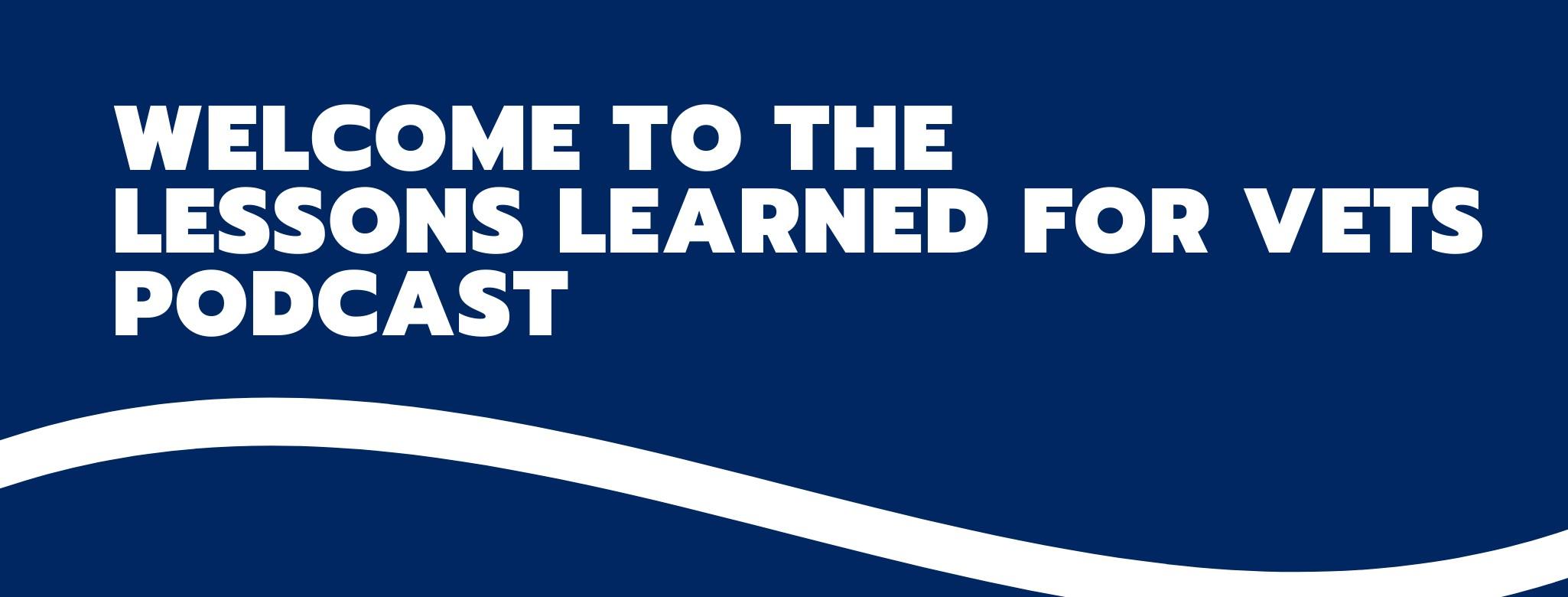
Season 4 Episode 159: Job Interview Success with Brenda Mariah - Part 2
On this episode of the Lessons Learned for Vets podcast, we continue our discussion on interview best practices with career strategist, Brenda Mariah. We encourage you to listen to Part 1, episode 158 before continuing with this episode. During Part 1, Brenda explained the purpose of an interview, what every employer is looking for during an interview and how to stay in control during the interview process. On this episode, we dive into the anatomy of an interview.
The interview process can be divided into 5 stages. During Part 1, we discussed Stage 1: Making an Entrance. We continue with Stage 2: Questions They Ask You. Most likely, every interview will begin with the “Tell me about yourself” question. Brenda advises candidates to use this question to highlight their qualifications, skills and character. Her formula is 1. I love… 2. I’m proud of… 3. I’m excited to…. First, tell the employer what you love about the role. Second, list some of your accomplishments. Third, let the employer know how you plan to use your skills to improve the organization. This question is meant to be an icebreaker and to give the employer insights about your professional qualifications and skills and how they can benefit their company. Make the answers relevant to their needs. Another popular question is “What are your weaknesses?” Brenda has 3 tips for responding to this question. 1. It should be an actual weakness that you possess. 2. It should not be critical to the job. 3. Explain how you are overcoming the weakness.
Stage 3: Question You Ask. At the end of the interview, always be prepared to ask the employer questions. If you are prompted to ask questions, and you decline the opportunity, the employer will assume you do not want the job. Prepare 10 questions for the employer knowing that some of them may have already been answered during the interview and assume that you will have the opportunity to ask 2 or 3 of your prepared questions. Don’t miss the opportunity to engage with the employer and show them that you’ve done your research and are interested in the job.
Stage 4: Closing. Make sure they know you want the job. Thank them for their time and express to them once again why you would make a great fit.
Stage 5: Post-interview follow-up. Did you know that only 1 in 200 candidates will send any kind of follow-up message after an interview? Sending a handwritten thank you, a thank you email or a LinkedIn connection request with a thank you message will help you stand out from the crowd. It also serves as an additional opportunity for you to showcase how your skills can benefit their organization. Don’t be afraid to include a plan to follow up on a specified date.
Subscribe to our YouTube channel at https://tinyurl.com/llforvets22
Connect with Brenda at https://www.linkedin.com/in/coachbrendamariah/
Explore Push Management Career’s Interview Training Program at https://www.pushcareermanagement.com/interview-coaching
Download the AAFMAA transition timeline at https://aafmaa.com/ll4v
SUBSCRIBE & LEAVE A FIVE-STAR REVIEW and share this with other veterans who might need help as they transition from the military!
Are You Struggling to Write Your Resume?
I created the Veteran Resume Self-inspection Checklist to lessen the resume writing struggle for veterans. This 11-item checklist will educate you in resume best practices while giving veterans a guide to assess their resume and determine if it's ready to send to employers.
Download Your Checklist Here




